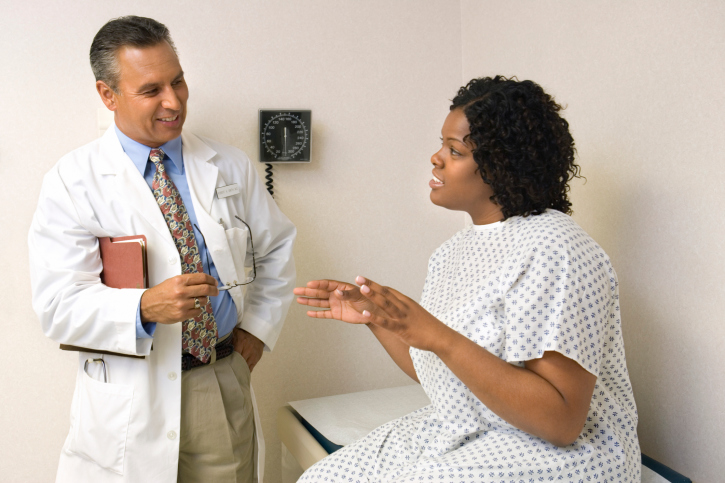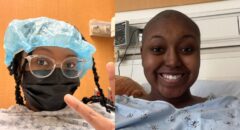 According to The American Cancer Society, there will be an estimated “1,685,210 new cancer cases and 595,690 cancer deaths” in the U.S., this year alone. To add some perspective, that’s approximately 4,620 new cases and 1,600 deaths every day.
According to The American Cancer Society, there will be an estimated “1,685,210 new cancer cases and 595,690 cancer deaths” in the U.S., this year alone. To add some perspective, that’s approximately 4,620 new cases and 1,600 deaths every day.
Of those cases, about 12,990 women will be diagnosed with invasive cervical cancer – leading to an estimated 4,120 deaths.
While over the last 40 years cervical cancer death rates have gone down more than 50% overall, these shocking statistics are certainly reason to stay informed, particularly Black women.
"Unfortunately, cervical cancer is more common in African-American women," Dr. Idris Abdur-Rahman, board certified OB/GYN and one half of Twin Doctors TV, told BlackDoctor.org. Dr. Abdur-Rahman added, "Because minority women tend to have less access to quality or regular healthcare, African-American and Hispanic women have higher rates of cervical dysplasia (pre-cancer) and cervical cancer than do Caucasian women."
In general:
- Cervical cancer tends to occur in midlife.
- Most cases are found in women younger than 50.
- Although it rarely develops in women younger than 20, many women don’t realize the risk of developing cervical cancer is present at any age.
- More than 15% of cases of cervical cancer are found in women over 65.
While women with early cervical cancers usually have no symptoms, these cases were rarely found in women who get regular pap tests. Unfortunately, in many cases, symptoms do not occur until a pre-cancer becomes a true invasive cancer – aka, grows into nearby tissue.
Of course, there are several common warning signs to look out for, including:
- Vaginal bleeding after sex.
- Bleeding after menopause.
- Bleeding or spotting between periods, as well as having longer or heavier menstrual cycles.
- Bleeding after douching, or after a pelvic exam.
- Unusual discharge from the vagina containing blood which may occur between your periods or after menopause.
- Pain during sex.
Please note, these signs and symptoms can also be caused by conditions other than pre-cancers, like an infection. If you are experiencing any of these issues, you should see your doctor right away. Ignoring symptoms only puts you at more risk, giving the infection or possible pre-cancer the opportunity to develop into a more advanced stage, lowering your chance for effective treatment.
Of course, the best way to avoid developing cervical cancer is prevention.
- Avoid contact with the human papilloma virus (HPV).
- Use condoms: "There is no such thing as absolutely safe sex (except for abstinence) BUT barrier protection like condoms greatly reduce the risk of transmitting cervical cancer causing HPV," Dr. Abdur-Rahman advised.
- Don’t smoke: reduces the risk of cervical pre-cancer and cancer.
- Get vaccinated: Vaccines are available (for boys and girls) that can protect against certain HPV infections (subtypes 16 and 18). Some can even protect against anal and genital warts. However, keep in mind, these shots won’t treat an infection that’s already present.
- Get regular pap smears: According to Dr. Abdur-Rahman, "There is a lot of controversy regarding the optimal PAP screening interval but getting regular PAP smears including testing for HPV will all but eradicate the risk of cervical cancer."
The biggest takeaway? Don't wait for symptoms to appear. Be screened regularly.






